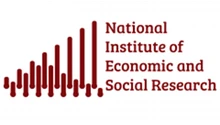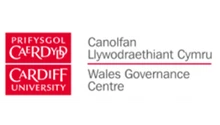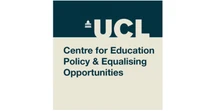Youth violence has high costs – not just for the victims but for their families and communities. Tackling the crisis needs a coordinated approach of the kind deployed in response to the Covid-19 pandemic – one that includes police and the criminal justice system, but with public health at its core.
Serious youth violence in England and Wales is costing the country around £1 billion each year (a figure that takes account of the total economic and social cost). It is also having a devastating impact on the lives of countless young people and leaving deep and enduring scars on the families, friends and communities affected.
Here, youth violence refers to that committed by people aged between eight and 24 years old and ‘serious’ means physical violence, such as stabbings by use of a knife instrument or violence involving the use of a gun.
To give a sense of the magnitude of this violence, in 2023, the Youth Endowment Fund surveyed 7,500 children in England and Wales and found that one in four had either been a victim of violence or had perpetrated violence themselves.
Researchers and a new Youth Violence Commission are seeking to understand and determine the root causes of serious youth violence, and to assess and evaluate its economic and social costs. This work also aims to propose policy measures and mechanisms that can help to reduce such violence.
While the focus of this research and the Commission has been on England and Wales, many of our insights, methods and results are relevant and applicable to other parts of the world.
What are the root causes of serious youth violence?
This research has established that the root causes of serious violence are complex, multi-dimensional and longstanding. Some of the key factors include:
- Adverse childhood experiences: traumatic events that occur during a child’s life. For example, those who commit serious acts of violence have often been subjected to or witnessed domestic violence as children.
- Exclusion from mainstream education. A remarkably high proportion of young people who commit serious acts of violence have been excluded from mainstream education – a process that further damages their self-esteem and identity.
- Increasing rates of child poverty and growing levels of inequality are further drivers of serious youth violence.
- Lack of trust between the police and some communities is a key factor explaining the rising levels of violence. This has been caused, in particular, by a sharp decline in neighbourhood policing, which is a critical mechanism to build and maintain trust and other forms of social capital.
- The lack of support and investment in certain public services, such as youth services and social housing, has contributed to rising levels of violence. For example, an extraordinary number of third sector organisations are being forced to compete for small pots of short-term project funding, leading to the closure of many organisations that provide vital services to young people.
- Many young people are growing up in unsafe and squalid housing. These are young people from the most socio-economically deprived communities, who are becoming further demoralised and alienated from society, generating feelings of shame, anger and resentment that lie at the core of many instances of violence.
- Drugs and gangs also contribute to rising levels of serious youth violence.
What are the economic and social costs of serious youth violence?
There are both direct costs of serious youth violence, as well as some important indirect costs, as the violence also affects families and communities (as economists say, it imposes ‘negative externalities’).
To understand these two forms of cost, we undertook an ‘economic and social cost-benefit analysis’. While we used data for England and Wales, the methods and methodology can be deployed to do the same evaluations and calculations for other countries.
The largest direct costs resulting from violent incidences relate to the physical and emotional harm done to people. For example, when an individual is killed because of the violence, this cost boils down to the value of the life of the person killed. We use the now standard ‘quality of life-years’ approach in order to evaluate these costs.
Other direct costs of serious youth violence include the costs to the police (in terms of their time, for example) of dealing with such incidents. In addition, there are costs to the wider criminal justice system (the time and resources of courts, for example) and health services (such as hospitals needing to take care of victims of stabbings).
Further, there are indirect costs that emerge from lost economic output or the fear of violence (although we are unable to measure the latter). The fear that serious youth violence creates among others in the neighbourhood and local community has a serious (adverse and indirect) effect that can influence people’s behaviour and actions. This issue is worthy of further research.
To assess the magnitude of this kind of violence , we use data from the Crime Survey for England and Wales, in conjunction with police-recorded data on violent incidents (further details of the data, methods and methodology are in the full research report). Future work will refine these estimates.
From these data, we established that in 2018/19, serious youth violence across England and Wales generated a total economic and social cost of around £1.3 billion. This figure constituted a rise of over 50% since 2014/15. The significant increase in costs reflects the recent rise in levels of serious violence among young people.
Over the past 11 years, serious youth violence in England and Wales has had a total economic and social cost of around £11 billion. This is a staggering number, which reflects the devastating impact of serious youth violence.
This figure also highlights the economic and social case for investment by the UK government to help to reduce serious youth violence.
What can be done to reduce rates of serious violence among young people?
The World Health Organization (WHO) conceptualised serious violence as an infectious disease in its 2002 report and proposed a ‘public health’ approach to dealing with it. This involves a coordinated response among various agencies and organisations, in much the same way as was deployed to deal with the Covid-19 pandemic.
We have tested this WHO idea in several ways, including looking at some real-world cases. One case we examined carefully was that of Scotland, which adopted a public health approach about 15 years ago. At the time, it was designated as the ‘murder capital of Europe’, given the high number of murders. But after ten years, it had successfully and significantly reduced the murder rate.
A public health approach – such as that taken in Scotland – treats violence not only as a criminal justice issue (the standard response) but also includes other (preventative) perspectives. It requires a coordinated approach among various services and organisations in education, health and social services, as well as the police and the criminal justice system.
Coordination is critical and it is achieved, as in the Scottish case, via the creation of new and regional violence reduction units (VRUs). The UK government established 18 VRUs across the country in the summer of 2019. Research on the root causes of serious youth violence and analysis of the available data indicate that a public health approach is the best way forward for tackling this crisis. That is the central, overarching policy measure recommended by our research.
Where can I find out more?
- World report on violence and health: WHO, 2002.
- Crime Survey for England and Wales.
- Youth Violence Commission: full and interim reports.
Who are experts on this question?
- Abhinay Muthoo
- Keir Irwin-Rogers
- Stephen Machin
- Carmen Villa
- Matteo Sandi









































